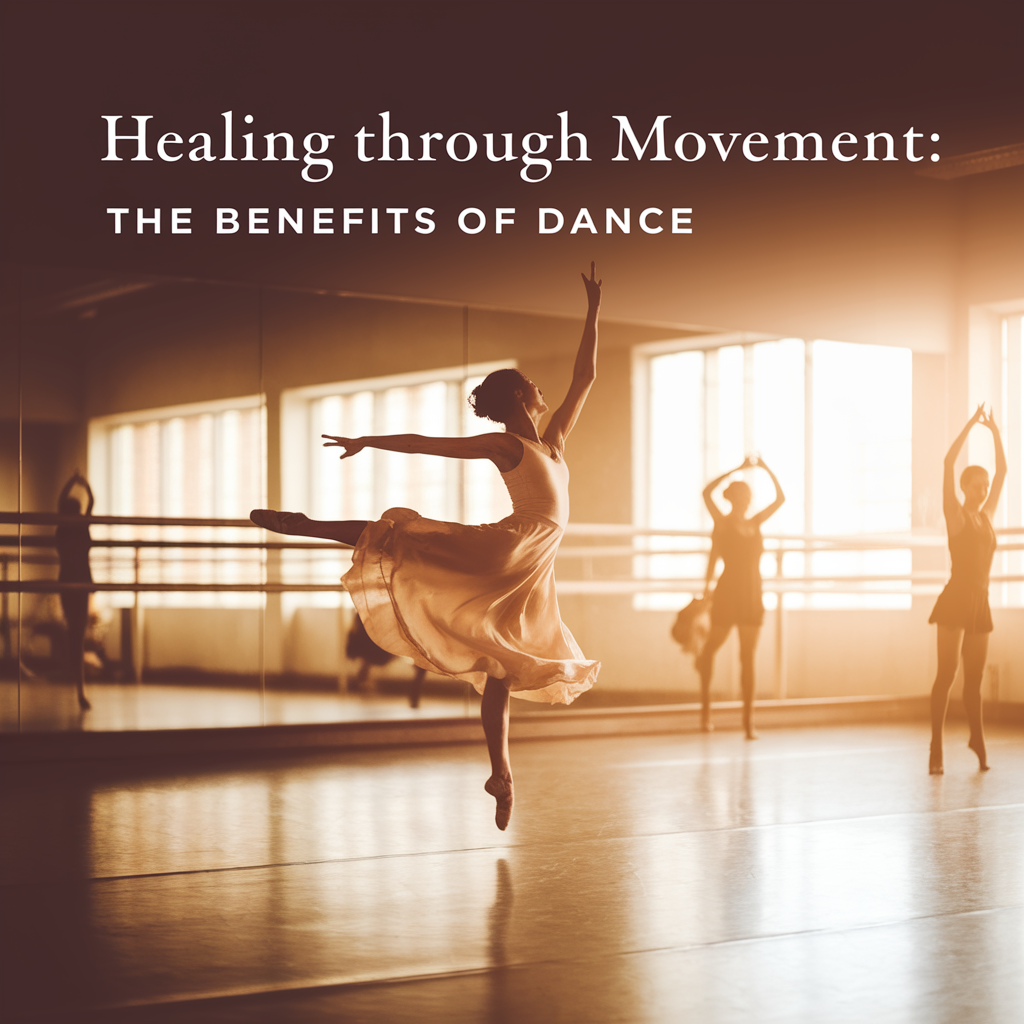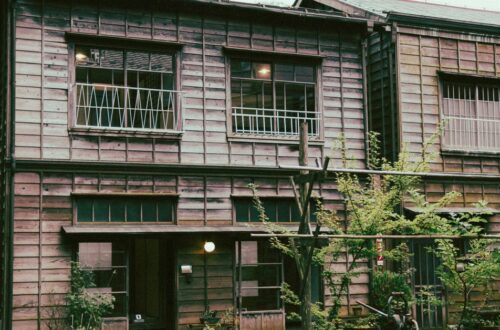Healing Through Movement: The Benefits of Dance
It’s often said that dance is a universal language, transcending cultural barriers and connecting individuals through rhythm and movement. But beyond the stunning pirouettes and heart-pounding beats lies a wealth of healing properties that can transform lives. Whether you’re a seasoned ballerina or someone who prefers to sway to the music in the comfort of your living room, the benefits of dance extend far beyond the dance floor.
A Historical Perspective: Dance as Medicine
Dancing has been a part of human culture for millennia, often linked to rituals and celebrations. Ancient civilizations, from the Egyptians to the Greeks, used movement as a form of expression and healing. In fact, many cultures have incorporated dance into their spiritual practices as a way to connect with the divine or to heal physical and emotional ailments. The idea that movement can promote healing is not a new concept—rather, it’s an age-old belief that has stood the test of time.
The Science Behind Movement
Fast forward to today, and science is catching up with these age-old beliefs. Research shows that dance can have profound effects on both physical and mental health. A significant number of studies have indicated that engaging in dance can reduce symptoms of anxiety and depression, enhance cognitive function, and even improve overall physical fitness. It struck me that, in a world obsessed with the latest fitness trends, we often overlook something so basic yet so powerful: movement.
Physical Benefits of Dance
Let’s break it down—first, the physical benefits. Dance is, at its core, a form of exercise. It gets your heart pumping and your muscles moving, which can lead to a whole host of health perks.
- Cardiovascular Health: Dance can be an excellent aerobic workout. Just think about how you feel after an hour of Zumba or a lively salsa class. Your heart is racing, you’re sweating, and you’re likely burning calories without even realizing it.
- Flexibility and Strength: Different styles of dance emphasize various physical attributes. Ballet encourages grace and flexibility, while hip-hop can build strength and agility. (I remember my first ballet class; I could barely touch my toes, let alone do the splits!)
- Balance and Coordination: Dance requires a certain level of coordination, which can improve balance and reduce the risk of falls—especially in older adults.
Enhancing Brain Function
Now, let’s get cerebral for a moment. Studies suggest that dance can enhance cognitive function, particularly in older adults. Engaging in complex dance routines challenges the brain, improving memory, attention, and even spatial awareness. I mean, have you ever tried to remember the steps to a complicated dance? It’s like a workout for your brain! This mental engagement can help stave off cognitive decline as we age.
The Emotional Healing Power of Dance
While the physical benefits of dance are impressive, the emotional and psychological advantages are perhaps even more profound. Dancing can serve as a powerful outlet for self-expression, allowing individuals to communicate feelings that might be difficult to articulate with words.
Relieving Stress and Anxiety
Let’s face it—life can be stressful. When I was in college, I often found myself overwhelmed with exams, work, and social obligations. But as soon as I hit the dance floor, I felt my worries melt away. Many studies support this; movement releases endorphins, those delightful chemicals that create feelings of happiness and euphoria. (Trust me, nothing beats the bliss of dancing like no one’s watching!)
Building Confidence
Moreover, dance can be a huge confidence booster. Learning new steps and mastering choreography can instill a sense of accomplishment. I recall the first time I successfully executed a difficult routine in a dance class; I felt like I could conquer the world! That boost in self-esteem extends beyond the dance floor, permeating other areas of life.
Dance and Community: The Social Aspect
Dance is not just an individual pursuit; it’s often a communal activity. Whether it’s a local dance class or a large-scale performance, the social element of dance can significantly enhance well-being. There’s something magical about moving in sync with others, isn’t there?
Creating Connections
Participating in group dance classes fosters a sense of community. People bond over shared experiences, learning together, and supporting one another. It’s these connections that can help combat feelings of loneliness and isolation. I remember attending a community dance event where I met people from all walks of life—each with their own story, yet united by a shared love for movement.
Encouraging Inclusivity
Moreover, dance can be incredibly inclusive. Adaptive dance programs are designed for individuals with disabilities, allowing them to experience the joy of movement. It’s a reminder that everyone has the right to dance, and it can be a powerful tool for fostering empathy and understanding within communities.
The Different Styles of Dance and Their Unique Benefits
There’s a dance style for everyone, whether you prefer the structured elegance of ballet or the free-spirited nature of contemporary dance. Each genre offers unique benefits, catering to different tastes and physical abilities.
Ballet: Grace and Discipline
Ballet emphasizes strength, flexibility, and control. It can promote discipline through its rigorous training, teaching dancers to focus and push their limits. Many ballet dancers speak of the meditative quality of focusing on their technique, transforming dance into a form of mindfulness.
Hip-Hop: Energy and Expression
On the other end of the spectrum, hip-hop is all about energy and self-expression. It allows dancers to let loose and express their individuality. The improvisational nature of hip-hop can also be incredibly liberating, allowing participants to find their unique style and voice.
Contemporary: Fusion and Emotion
Contemporary dance often combines elements from various styles, allowing for creativity and emotional expression. This genre can be particularly cathartic, as dancers often convey deep personal narratives through their movements. I find it fascinating how contemporary dancers can evoke such powerful emotions from audiences, often leaving them in tears or blissful joy.
Dance Therapy: A Professional Approach
Dance isn’t just a recreational activity; it can also be a therapeutic one. Dance therapy, facilitated by licensed professionals, uses movement to support emotional, cognitive, and physical integration. It’s a field that has gained recognition and respect over the years, as therapists have observed the profound effects of movement on mental health.
How Dance Therapy Works
In dance therapy, individuals are encouraged to explore movement as a means of expression. A trained therapist guides participants, helping them to connect with their emotions and release pent-up feelings through dance. It’s a holistic approach that fosters self-awareness and personal growth.
Research and Efficacy
Research has shown that dance therapy can be effective for various populations, including those dealing with trauma, anxiety, depression, or chronic illness. For instance, a study published in the “American Journal of Dance Therapy” found that participants reported decreased levels of anxiety after engaging in dance therapy sessions. It’s a tantalizing prospect—using movement as a healing tool.
Getting Started: How to Incorporate Dance into Your Life
If you’re feeling inspired to embrace the world of dance, you’re in luck! There are countless ways to get involved, regardless of your experience level.
Find a Class
Local community centers, studios, and gyms often offer a variety of dance classes, catering to different skill levels. From beginner ballet to advanced hip-hop, there’s likely something available in your area. (And hey, what better way to meet new people?)
Online Resources
If stepping into a classroom feels intimidating, consider exploring online tutorials. Platforms like YouTube have a plethora of dance classes you can try from the comfort of your home. Remember, the best part about dancing at home is that no one can judge your moves—unless, of course, your cat is watching!
Dance with Friends
Don’t underestimate the joy of dancing with friends. Organize a dance party, or simply blast your favorite tunes and let loose in the living room. The laughter and connection that come from shared movement can be incredibly fulfilling.
Overcoming Barriers to Dance
Despite the numerous benefits, some might feel hesitant to dance due to various barriers—be it physical limitations, self-consciousness, or lack of access to classes. The important thing is to acknowledge these barriers and find ways to navigate them.
Adapting to Physical Limitations
For those with physical limitations, there are adaptive dance programs designed to accommodate various needs. Movement can be modified to suit individual abilities, allowing everyone to experience the joy of dance.
Building Confidence
Self-consciousness can be another significant hurdle. Many people fear judgment or feel they lack the “skills” to dance. However, the beauty of dance lies in its subjectivity. It’s not about perfection; it’s about expression. I often remind myself, “If I’m having fun, who cares how I look?”
Conclusion: Dance as a Lifelong Journey
As we reflect on the numerous benefits of dance—both physical and emotional—it becomes clear that it’s more than just a form of entertainment. Dance can be a powerful healing tool, a means of self-expression, and a way to foster community. Whether you’re a seasoned dancer or a complete novice, there’s a place for you in this vibrant community.
So, what are you waiting for? Put on your favorite song, let go of your inhibitions, and allow yourself to heal through movement. You might just find that the dance floor is the best medicine of all. (And who knows, you could discover the next great dance move along the way!)






